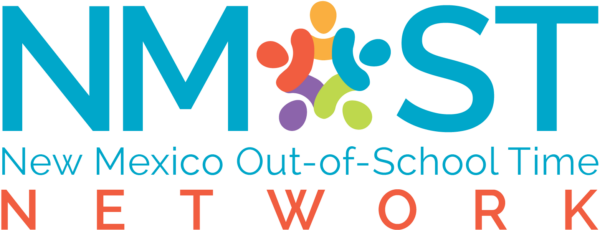The Boy Scouts of America (BSA), one of the largest youth organizations in the United States, failed to take safety precautions to protect children from sexual predators in their programs for decades. Thousands of lawsuits are now pending against the BSA, all filed by men and women who were sexually abused by molesters within the organization.
Child abuse is something we would rather not talk about, or even think about, but we must. Many of us find it challenging and difficult to begin this conversation. As the Executive Director of NMOST, advocating for a safe place for children after 3 pm, I choose to step up to initiate this difficult conversation to make sure we do everything we can to protect children and prevent sexual abuse.
Out-of-school time (OST) providers strive to create a safe environment for youth so that they can grow, learn, and have fun. Part of creating a safe environment is making sure that youth are not harmed in any way while participating in OST activities. Sadly, one risk in any organization working directly with children and youth is child sexual abuse. It is therefore vital that organizations create a culture where child sexual abuse is discussed, addressed, and prevented.
The fact that child predators are able to insinuate themselves into our communities and into OST programs and activities designed to protect children is frightening. The Boy Scout scandal is a wake-up call to youth-serving organizations for greater vigilance and determination. In order to move on from these revelations and similar stories in our communities, we must learn from them and we must do whatever we can to create a safe environment.
According to the CDC, the same dynamics that create a nurturing environment, and may ultimately protect against child sexual abuse, can also open the doors to sexually abusive behaviors. Research has shown that youth who are emotionally insecure and unsupported may be more vulnerable to the attentions of offenders. By promoting close and caring relationships between youth and adults, organizations can help youth feel supported and loved and thus reduce their risk of child sexual abuse. But that same closeness between a youth and an adult can also provide the opportunity for abuse to occur. When developing policies for child sexual abuse prevention, organizations must balance the need to keep youth safe with the need to nurture and care for them.
A common misconception about sexual abuse is that children are most likely to be abused by strangers. According to the Rape, Abuse & Incest National Network (RAINN), the majority of children and teen victims of sexual abuse know the perpetrator. Of sexual abuse cases reported to law enforcement, 93% of juvenile victims knew their abuser:
- 59% were acquaintances
- 34% were family members
- 7% were strangers to the victim
The majority of child victims are 12-17. Many children wait to report or never report child sexual abuse. Although estimates vary across studies, the data shows:
- About 1 in 4 girls and 1 in 13 boys experience child sexual abuse at some point in childhood.
- 82% of all victims under 18 are female.
- Females ages 16-19 are 4 times more likely than the general population to be victims of rape, attempted rape, or sexual assault.
The effects of child sexual abuse can be long-lasting and affect the victim’s mental health. Victims are more likely than non-victims to experience the following mental health challenges:
- About 4 times more likely to develop symptoms of drug abuse
- About 4 times more likely to experience PTSD as adults
- About 3 times more likely to experience a major depressive episode as adults
Source: RAINN’s statistics
Child sexual abuse is preventable and, as OST leaders and providers, we must take the steps needed to prevent child sexual abuse. Many of us want to prevent sexual violence among the children we work with and don’t know how best to do so. Much of the time, prevention takes more of an individual approach– what a child can do to deter abuse or respond to “grooming.” Research now shows that in addition to “grooming” an individual child, families, schools, and entire communities are manipulated in ways that keep the abuse from being noticed or intervened upon.
To assist OST providers with information on how to be proactive, NMOST reached out to Solace Crisis Treatment Center in Santa Fe and inquired about existing training on prevention of child abuse in youth programming. The center staff has since partnered with NMOST and will offer a workshop April 29th, providing an opportunity for participants to reflect on the messages we receive about safety as adults and other factors that can lead to violence in our communities. Participants will also learn how to proactively and effectively institute policies and cultural norms to prevent sexual violence in their communities. This training is designed to support those who work with youth and are concerned with reducing the impact of violence in their lives.
Creating Protective Communities (Solace & Resolve Training)
WHEN: Thursday, April 29
TIME: 10:00am – 12:00pm MT
Sexual Assault Awareness and Prevention Month is an annual designation observed in April. We ask the OST community to engage with this issue during this month by learning more about sexual violence, sharing information, attend training and bringing togther community and partners. The CDC has developed technical packages to help states and communities take advantage of the best available evidence to prevent child abuse and neglect as well as sexual violence. The CDC has also produced a resource, Preventing Adverse Childhood Experiences (ACEs): Leveraging the Best Available Evidence, to help states and communities take advantage of the best available evidence to prevent ACEs. It features six strategies from the CDC Technical Packages to Prevent Violence.
Together we can make a difference!
